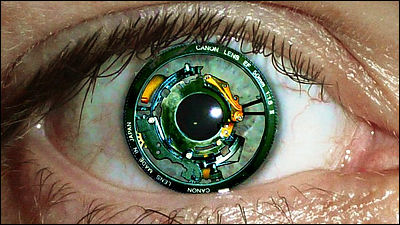Study to halt visual acuity due to aging by retinal implants of stem cells

byVictor Freitas
Atrophic typeAge-related macular degenerationHave succeeded in stopping visual acuity reduction by stem cell-based retinal implants, a collaborative research team of researchers and clinicians of the USC Roski Eye Institute and several California research institutes reported. This research has been completed in Phase 1 and Phase 2 clinical trials, and the research content has been published in the Science Translational Medicine.
A bioengineered retinal pigment epithelial monolayer for advanced, dry age-related macular degeneration | Science Translational Medicine
http://stm.sciencemag.org/content/10/435/eaao4097
Study of Subretinal Implantation of Human Embryonic Stem Cell-Derived RPE Cells in Advanced Dry AMD - Full Text View - ClinicalTrials.gov
https://clinicaltrials.gov/ct2/show/NCT02590692
With Some Structure, Stem Cells Might Still Stop Vision Loss | WIRED
https://www.wired.com/story/with-some-structure-stem-cells-might-still-stop-vision-loss/
Researchers test stem cell-based retinal implant for common cause of vision loss | EurekAlert! Science News
https://www.eurekalert.org/pub_releases/2018-04/uosc-rts040318.php
Perspectives on new stem cells for vision loss paper - The Niche
https://ipscell.com/2018/04/perspectives-on-new-stem-cells-for-vision-loss-paper/
This is humanEmbryonic stem cellsTo lay a layer of retinal pigment epithelial cells made from a thin support structure on a very thin support structure and transplant it to the patient's retina. Transplant has already been done to four patients of the USC Roski Eye Institute by surgery and safety has been confirmed by a follow-up investigation of up to one year. There was no harm to the patient's body by performing surgery and implantation, and as of April, 2018 the condition of the patient's postoperative condition was good. Also, to improve the visual function, it is necessary to integrate the implant and the retinal tissue of the patient, but integration has been reported in transplant patients.
Similar studies have been done so far, but the supporting cells did not land in the right place, and no effective treatment was devised. Therefore, I borrowed the power of bioengineering and integrated synthetic retinal pigment epithelial cells made from embryonic stem cells into a single layer like a natural tissue by using synthetic scaffolds. It seems that it has become possible to carry out stable transplantation.
"This is the first clinical trial using stem cell-based implants, the implants were designed to replace single-cell layers with reduced function of atrophic age-related macular degeneration patients," said Amir H. Kashani, associate professor who led the research, "This implant has the potential to halt the progression of the disease and to improve the symptoms of the patient" It is safe for human beings to use "and the first I took a step forward. "
A man in the photo is Associate Professor Amir H. Kashani.

Atrophic type age-related macular degeneration is a common type among age-related macular degeneration,Central visionLost, you may not be able to perform everyday tasks such as reading, writing, driving, looking at the person's face. By 2020 there are as many as 3 million patients with atrophic-type age-related macular degeneration in the United States, and people over 65 years old are considered to have serious damage to the vision.
The team evaluated the effectiveness of the treatment in the study, one patient out of four said that improvement in visual acuity was seen in the test "How many letters can be read in the visual acuity examination table" . In addition, two patients were found to have visual function by "test how much retinas implanted can be used" test. In addition, it is said that patients whose vision declined had not been seen.
The part indicated by the black dotted line is the implant.

"Our findings indicate that this unique stem cell-based retinal implant is well tolerated and preliminary test results may help people with advanced atrophic-type age-related macular degeneration, "Mark S. Humayun, an engineer who took part in the research and became the center of implant development, said.
In March 2018, a retinal pigment epithelial cell sheet derived from human embryonic stem cells was transplanted to a patient with wet type age-related macular degenerationAlthough research results are also reported, This is from another research team. Since both studies were small scale and did not have a control group, it is still unknown at the time of article creation whether or not it can actually be used for stem cell therapy.
Related Posts:
in Science, Posted by darkhorse_log







